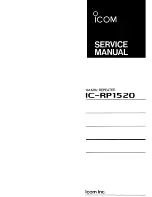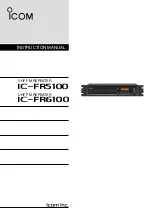
EN - 4
2.2 Description of on-board machine (fig.2)
2.2.1
General switching on
To manage the Divio comfort unit via the control panel, it must be connected to the mains.
If there is a master switch on the mains power supply then it must be switched on.
2.2.2 Activation
To activate Divio:
- Press the MODE button (fig.2 ref. Q) and select one of the operating modes.
2.2.3 MODE button (fig. 2 ref. Q)
For setting the operating mode the Divio comfort unit. Each time the button is pressed the following operating modes are set in
sequence:
- automatic function
- silent function
- night function
- maximum ventilation speed
2.2.4
Manual heating/cooling selection
Each time the sum/win button (fig. 2 ref. H) is pressed it corresponds to the change of the summer/winter regulation mode performed
by the command and visible through the lighting up of the 2 Red heating LED (fig. 2 ref. G) or the blue cooling LED (fig. 2 ref. A).
In heating the Red LED (fig. 2 ref. G) is alight when the setpoint is higher than the room temperature, when the setpoint is lower
both red and blue are OFF.
In cooling, the Blue LED (fig. 2 ref. A) is alight if the setpoint is lower than the room temperature, if it is higher, both red and blue
LEDs are OFF.
2.2.5 Stand-by
To switch off the appliance, keep the MODE button (fig. 2 ref. Q) pressed for about 2 seconds. The lack of a warning light indicates
the “stand-by” status (no function).
When the control is set to this operating mode it guarantees an anti-freeze security. If the ambient temperature drops to below
5°C, the Heat Pump input is activated.
2.2.6 Selecting on-board machine electronic control temperature
Use the two buttons (fig. 2 ref. B and F) to set the desired room temperature which is displayed on the LED bar (fig. 2 ref. D). The
adjustment range is from 16 to 28 °C; the resolution is 0.5° C and is obtained when the two adjacent LEDs light up.
At the two ends are the extreme values, minimum (maximum cooling temperature) and maximum (maximum heating temperature)
(fig.2 ref. C and E).
Only set these values for short periods and then set the selection to an intermediate value. The command is very precise, set it
to the desired value and wait until the command has made the adjustment. To reduce the possibilities of temperature oscillations
there is a neutral band of 2°C (1°C more and 1°C less than the selector setting).
2.2.7 On-board machine electronic control LED indications (fig.2)
The setpoint can be adjusted between 16 and 28 °C and is displayed on a graphic bar made up of 13 amber-yellow LEDs (fig.2 ref.
D); the resolution is 0.5° C and is obtained when the two adjacent LEDs light up. At the ends of the graphic bar there are 2 other
LEDs slightly distanced from the others, the blue on the left is minimum (fig.2 ref. C) the red on the right is the maximum (fig.2 ref.
E) and they indicate the respective exceeding of the extremes by 5 and 40 °C.
The 4 green LEDs (fig. 2 ref. L, M, N, O) indicate the set operating mode, when all are off this indicates stand-by.
The red LED (fig.2 ref. G) and blue LED (fig. 2 ref. A) respectively indicate the activation of the heating or cooling function. If one
of the two LEDs is flashing, this indicates that the request of water (hot or cold) has not been satisfied and stops the fan until the
water temperature reaches a suitable value to satisfy the request
If the water temperature don’t reaches a suitable value for the requested function after 10 minutes the control is blocked and only
the yellow error LED lights up (Example 1: heating function with room temperature of 20°C and water temperature below 15°C.
Example 2: cooling function with room temperature of 20°C and water temperature above 25°C).
The release is automatic after 45 minutes or manual when there is a passage from heating request to cooling request (or vice
versa) or by pressing the MODE button (fig. 2 ref. Q).
With the automatic cooling/heating regulation system is activated, the simultaneous lighting-up of the 2 red heating LED (fig. 2 ref.
G) and blue cooling LED (fig. 2 ref. A) indicates that the setpoint has been reached (neutral band).


























